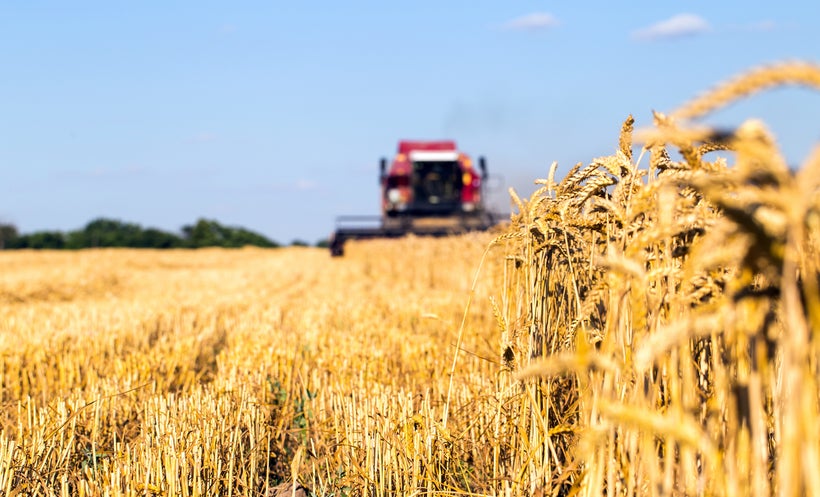Originally published on HuffPost on May 5, 2017.
Written by Emily Broad Leib, Director of the Harvard Law School Food Law and Policy Clinic

Ready your tractors and plows—the farm bill is upon us. This omnibus package of legislation, reauthorized every 5 to 7 years, shapes virtually every aspect of our food and agricultural system. Yet this wide-ranging, $500 billion piece of legislation, which aims to ensure a safe and sufficient food supply for our nation, fails to take steps to guarantee that the food we produce actually makes it to our plates. Congressional agriculture committees recently commenced hearings to begin preparation for the 2018 Farm Bill, which makes this the perfect time to discuss how the next farm bill can invest in solutions to reduce the nearly 40% of food that goes to waste in the U.S.
Reducing food waste offers a significant opportunity to impact the economy and environment. We spend $218 billion to produce, process, transport, and then dispose of 62.5 million tons of food each year. Wasted food eats up 20% of our nation’s freshwater, cropland, and fertilizer before ending up in the landfill, where it adds 113 million tons of greenhouse gases to the atmosphere annually. At the same time, one in seven Americans are food insecure. Much of the food we currently waste is still safe, edible, and nutritious, and redistributing just 30% of this food could feed every food insecure American.
With preparations for the 2018 farm bill already under way, now is the time to rethink the role the federal government can play in reducing food waste to protect people, preserve our planet, and provide economic benefits, while helping us value food as a resource. This week, the Food Law and Policy Clinic of Harvard Law School, in partnership with Food Policy Action and ReFED, released Opportunities to Reduce Food Waste in the 2018 Farm Bill, which recommends policies Congress can implement to tackle food waste in the next farm bill.
There are myriad opportunities to incorporate food waste into the farm bill, including many simple, easily implemented changes, like tweaks to statutory language, eligibility requirements, or grant selection processes that can allow many farm bill programs to address food waste. For example, the farm bill includes several grant programs to support distribution, processing, and marketing of food for sale. Broadening eligibility language to include food recovery organizations and allow grant funding to support distribution of food that is donated but not sold can ensure less is wasted. For other programs, directing USDA to preference applicants with a plan to donate surplus food, or who pledge to create such a plan, would provide a strong incentive for producers to take steps to donate more and reduce their waste.
Congress can also enact new policies in the farm bill to address key drivers of food waste, such as clarifying and standardizing confusing “best by” and “sell by” date labels. Currently, manufacturers have broad discretion over date labels and use a wide array of mystifying phrases that generally indicate a product’s quality, not safety. Misinterpretation of these labels by consumers, businesses, and even regulators (who in some states restrict the sale or donation of such safe, wholesome food) puts more food in landfills. The upcoming farm bill is the perfect opportunity to establish a system that limits date labeling language to two standard options, a quality date and a safety date, cutting down both consumer confusion and wasted food. Industry groups are already on board—the Food Marketing Institute and Grocery Manufacturers Association recently announced a voluntary initiative to just use two standardized date labels: a standard “best if used by” for quality and “use by” for safety—and federal legislation can ensure this standard takes root nationally.
The 2018 Farm Bill can also build on state-level pilot programs. Many states and localities have implemented policies limiting the amount of organic waste that businesses can send to landfills. In Massachusetts, implementation of an organic waste ban achieved a five-fold increase in waste diversion, and created more than $175 million in economic activity and 500 jobs in just two years. Measures like these have tremendous potential, but also require significant up-front investments to build waste diversion infrastructure. The farm bill could provide dedicated planning and implementation funding to support state governments that implement similar bans, making the wins seen in Massachusetts replicable across the nation.
In 2015, USDA and EPA announced the first-ever U.S. food waste reduction goal—a bold and aggressive goal of halving our food waste by 2030. If the federal government doesn’t invest in food waste reduction, then we will fail to hit the mark. It is time for Congress to tackle the issue of food waste in the U.S.; a farm bill that remains silent on the topic is a missed opportunity to break our food waste habit and achieve significant social, environmental, and economic benefits in return.


Health Law & Policy, Commentary
Gearing Up for 2025: Advocates Share Challenges and Opportunities – Health Care in Motion
December 18, 2024